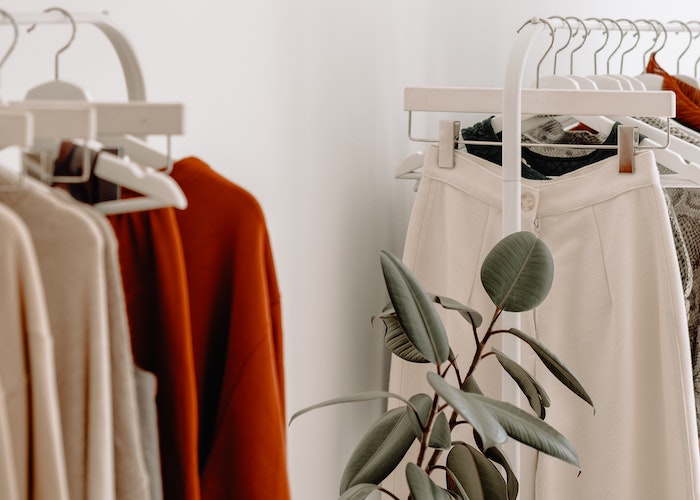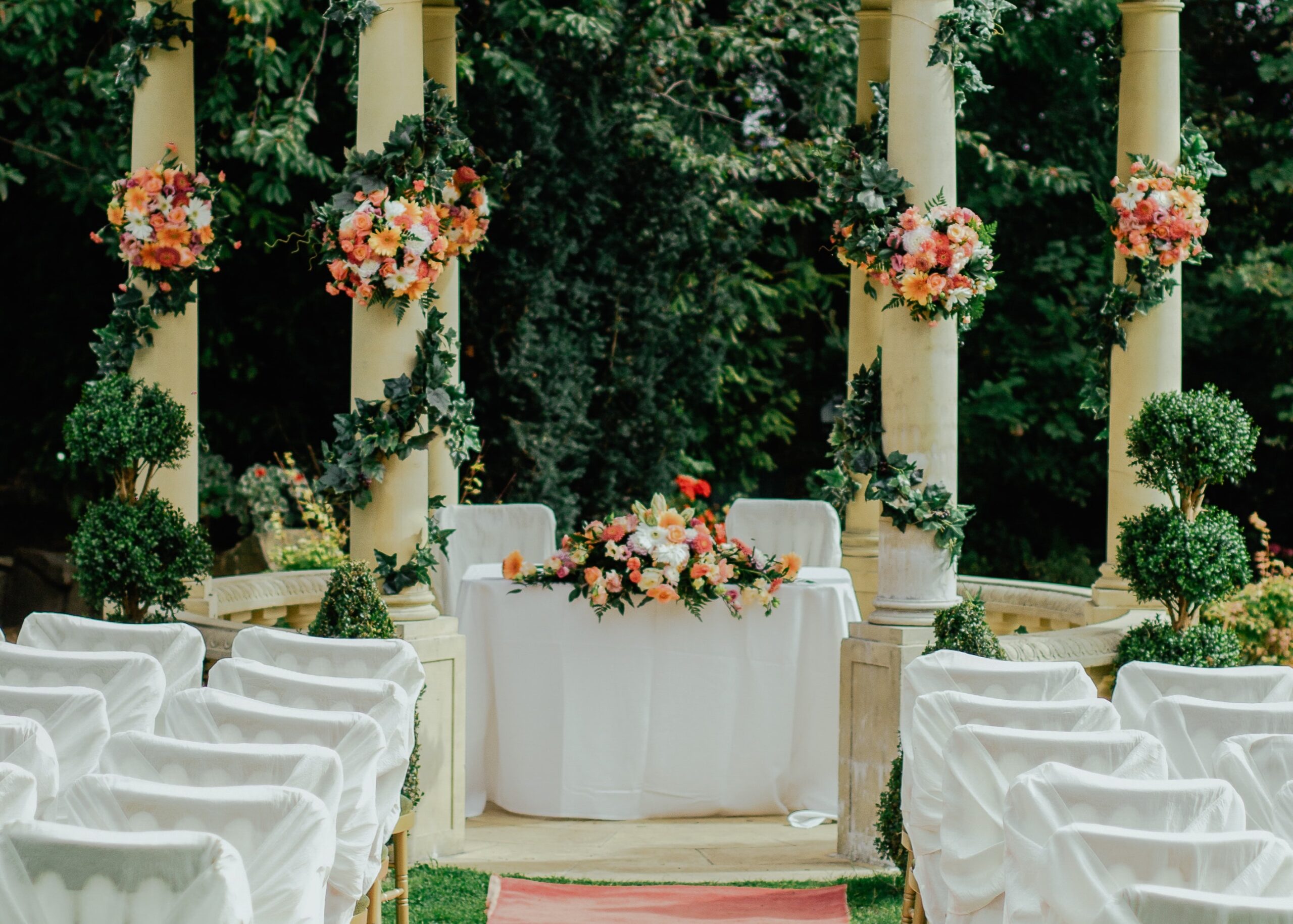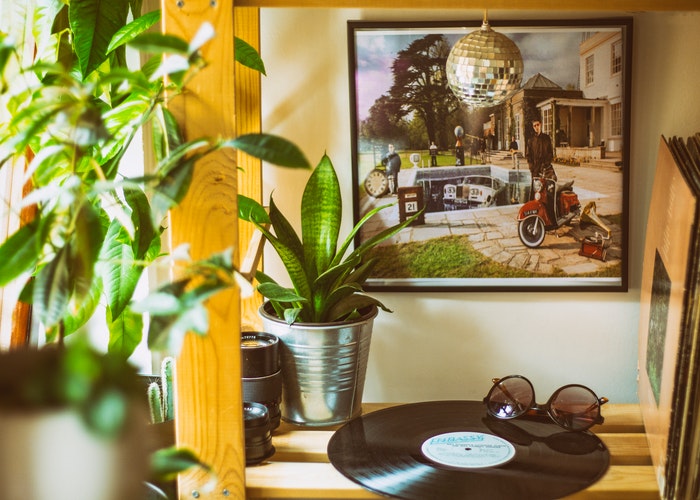What One Couple Learned After A Year Of Living In A 140 Sq Foot Trailer

With a big project behind me and summer fast-approaching, I’m finally starting to get ready for my road trip. As part of my research, I’ve been devouring stories about other people who have lived on the road for an extended period of time, and came across the blog Tiny House, Tiny Footprint. I love Kathleen and Greg’s story because they don’t hide the fact that it’s not always easy to live small. You have to be intentional about everything, including trusting your gut about how much space you really do (or don’t) need. Kathleen agreed to share part of their story with us today. Enjoy, friends!
—–
Two years ago, I was living with my boyfriend Greg and our dog Blaize in a two-bedroom apartment in Denver. I was drawn to city living: tall buildings that sparkled in the sun and the hustle and bustle of people moving constantly. But I also looked forward to the weekends: times when I could escape the city and think more clearly.
Every now and then, Greg and I would find someone in the mix of city dwellers who also dreamed of leaving it completely. We would talk in whispers about living more remotely, less attached to material things. We would plan a trip or two to be in the wilderness for a few days, but then city life would grab us and suck us back in. It’s easy to feel trapped when you think you’re supposed to be living one way but long for something different.
Greg had lived in a van in New Zealand a few years back and wondered what it would be like if he could return with me to a more minimalist lifestyle. I didn’t know anyone who lived small, so it was hard for me to picture anything different from the way I had been living. But the more we discussed the idea of tiny living, it seemed to be only way we could live more freely, save money, be more environmentally conscious, and connect with nature.
As I sat across from a friend in a coffee shop in the city, I asked her what she thought about our decision to test out tiny living. She agreed it sounded dreamy, but was it really sustainable? Could two people and a dog really cohabitate in a small space and still get along? Wasn’t it easier and more comfortable to live in a house or apartment? With those questions in the back of my mind, I knew the only way to know for sure was to try it myself.
A few days later, we searched Craiglist for tiny homes and went to go look at a used camper trailer that was up for sale. I had never been inside a camper before, so I had no concept of what the interior would look like. Nestled in 140 square feet were a bunk bed, sitting area, kitchen, bathroom, and two closets. We bought the camper from its owner for $1,800, the equivalent of two months’ rent in the city.
We parked the camper in a friend’s driveway while we went through the process of downsizing all the items we had accumulated from living in an apartment. I donated boxes of clothes and gave furniture to friends. We spent our weekends cleaning the camper, scrubbing off dirt and removing all the dust that had accumulated. We sealed holes in the roof and interior with spray foam insulation, and we covered pieces of Pylo Iso Insulation in radiant barrier that we fit like puzzle pieces into the windows.
As we finished up the home improvements, we still had a lurking concern that we didn’t want to address. We didn’t want to live in a friend’s driveway, so where were we going to park our tiny home? Due to strict city building and zoning codes, no one we asked was keen about having us park in their backyard. I was frustrated and began to lose my faith in tiny living. Our apartment lease was coming to an end, and we didn’t have a place to live. I turned to Airbnb and messaged people who were renting out their houses. I thought there might be a chance that someone would be open to renting land. After a few messages back and forth with curious landlords, we found a family that was open to us renting out their backyard for a year.
In October 2014, we parked the camper in its new location. Bordered by open space, the camper sat a few yards away from coyotes that howled at night and deer who stood out like silhouettes in the sunrise. Winter came quickly and Greg hadn’t completely finished insulating our tiny space. We dressed in layers and sat in bed, covering our bodies with sleeping bags. I wasn’t used to the constant cold indoors and it froze me into wanting to do anything besides complain. I dreamed about hot showers and sitting next to a fireplace. As I escaped to friends’ houses after work to stay warm, Greg worked on adding more insulation. He shoveled snow and packed it around our camper to trap heat in. Even though he was working hard and the camper slowly became warmer, I still saw our tiny house as cold and uninviting. I thought about how much easier it would be to go back to living in an apartment.
I fought Greg on every aspect of tiny living. When something would go wrong, I would blame our decision. When I would go outside in the cold to retrieve food from a refrigerator in the shed, I wondered why we were choosing a lifestyle so uncomfortable and unconventional. Was this the reason people didn’t live this way?
Greg was worried about our pipes freezing, so gallon jugs became our primary water source. We refilled them weekly at local grocery stores, and showered at our respective gyms before work. We removed the RV toilet the camper came with and installed a composting toilet that we purchased from Nature’s Head. We made this decision because it aligned with our environmental focus and also eliminated a need for a wastewater tank. Instead of dumping our waste into a sewer system, we used our waste as compost in the garden.
We bought a radiant space heater that was filled with oil to keep our place toasty. Around the space heater, we stacked rocks and water jugs to create a supplemental thermal mass. When our space heater wasn’t enough, we turned on our gas furnace. During some winter days when the Colorado sun glowed, we were able to use passive solar heat from our big camper windows to keep warm. We bought a 200-foot extension cord and powered our appliances from our landlord’s outdoor electrical box. But we ended up only using electricity sparingly: mostly for charging our phones, but also for powering an electric heater, a coffee maker, and a teakettle.
The first few months living small were challenging as I adapted to limiting my resources and finding space outside the one I was living in. I learned to use our backyard and local wilderness areas as places to find solo time and areas where I could spread out without worrying about bumping into Greg or Blaize. To go from 1,000 to 140 square feet was quite a leap for me, and I found it quite difficult to live this lifestyle in one location. I think there’s a difference when you live on the road because each day is a new experience. While we were grateful to be parked in a backyard, we felt trapped from living freely as we feared someone might discover we were living there illegally and ask us to leave. We also were still paying rent, and wanted to put our money toward something that we could invest in.
As our one-year mark of living small approached, Greg and I started to discuss our next options for tiny living. We sat down with our landlords and they said we could stay for a few months longer while we looked for another place to live. This gave us some time to explore what would be the best fit. We searched websites for raw land in Colorado, but were disenchanted after learning that another tiny living couple had struggles living in their Airstream on their land. City building and zoning codes required them to have another housing structure and they had difficulty designing a house that met their minimalist ideas.
It seemed like we had three options: find someone else’s backyard again, buy raw land and build a structure on it, or buy land with a house already on it. After going back and forth, we decided the most economical and freeing decision was to buy a house on some land. That would allow us an area to park our camper, a place for a garden, and house that was already built to code. For us, owning a house and land was a meaningful investment. It was a way for us to escape spending our money each month on rent. While we now have a mortgage to pay each month, we make that money back when we rent out whatever space we aren’t using to other nomads who are curious about tiny living or want a retreat.
While our decision to buy a home might seem fairly clear, it still felt like we were betraying our tiny living community. After 14 months living in a camper on someone’s land, we are now splitting our time between a few forms of tiny living. We spend winters in a house, summers in a camper trailer and weekends living out of car or tent in the wilderness. We haven’t abandoned our tiny lifestyle by not living mobile full-time. Rather, we’ve opened all of our doors (both big and small) for others to step inside and feel something—whatever that may be. We dream of working remote jobs and living in a vehicle on the road, but for now, we have a homestead, a place to call our own, and a place to return to whenever we please.
Kathleen Morton is the founder of Tiny House, Tiny Footprint, a website where she shares stories of her experiences living small, as well as others living alternative lifestyles. She is an activist in the tiny house movement, encouraging others to reduce their environmental footprint and connect with nature. You can also follow her on Instagram.
Image via Pexels




